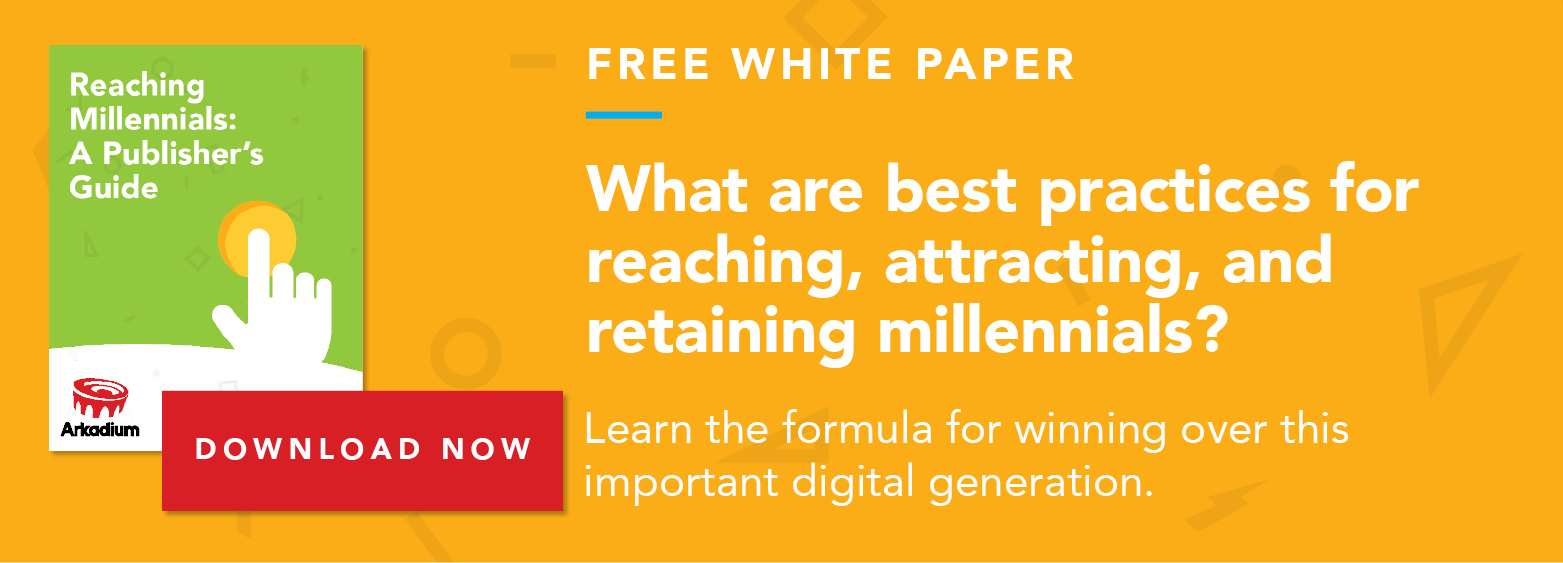The Future of Digital Publishing, Part I

The world of digital publishing is changing. Fast.
An influx of new technologies including virtual reality, 360-video, live streaming, and messaging apps are introducing new ways for publishers to connect with users and distribute content like never before.
Here’s how early adopters are successfully using these new, publisher friendly technologies.
Virtual Reality
Virtual reality (VR) is a computer generated 3-dimensional video that places a user into the action. As interest in the technology grows–62% of consumers reported they are familiar with VR–digital publishers are increasingly creating and distributing VR content.1
While many are just testing the waters, the results seem promising.
The New York Times, for example, has released half a dozen branded VR videos and found that sponsorships are a profitable means for monetizing VR.2 While exact metrics have not been disclosed, the app used to distribute their VR videos received the highest number of downloads for a New York Times app, totaling 600,000.3
Success aside, hurdles do remain.
A majority of VR headsets are jarringly expensive and require high levels of computing power. Likewise, production costs for VR content is relatively high and requires several months of production. And, lastly, viewership rates are relatively low.4
Tom Standage, deputy editor of the Economist, surmises: “I don’t think the tools are mature enough and demand is still uncertain among both readers and advertisers. This is a bit like the way the Web was in 1994: primitive, but promising.”5
VR’s less expensive, less technical, and easier to produce and distribute cousin, 360-video, seems to be garnering the viewership publishers want.
360-Video
360-degree video is a basic format of VR that can be watched via a smartphone and allows the user to look around from a static position. The cost of production is much lower than VR, and 360-videos are being produced at relative high frequency among publishers.
What’s more, distribution is supported by YouTube and Facebook, casting the net wider than true VR and lowering the bar for many publishers.
Discovery, for example, has produced and submitted over seventy 360-videos to YouTube, all of which have more than 1 million views. Their most successful video, titled ‘Mega Coaster: Get Ready for the Drop’, offered an experience that was just short of being on an actual roller-coaster.6 To date, the video has garnered 14 million views.
Indeed, VR and 360-video have two things in common: the first being immersive storytelling, and the second being live streaming.
Speaking of live streaming, stay tuned for our second installment of ‘The Future of Digital Publishing’ to learn how live streaming and other technologies are changing the digital publishing landscape.
1. Johnson, Lauren. “After Experimenting With 360-Degree Storytelling, Publishers Are Going All-In on VR.” AdWeek. N.p., 02 May 2016. Web. 12 Aug. 2016.
2. Moses, Lucia. “Condé Nast Is Betting on Virtual Reality Too.” Digiday. N.p., 03 May 2016. Web. 12 Aug. 2016.
3. “VR Survey: More Interest in Travel, Videos than Gaming.” Hypergrid Business. N.p., 21 June 2016. Web. 12 Aug. 2016.
4. Davis, Jessica. “The Guardian Bets Big on VR: ‘We’ve Jumped in the Deep End of the Pool’” Digiday. N.p., 27 Apr. 2016. Web. 12 Aug. 2016.
5. Southern, Lucinda. “The Economist Is Also Getting into Virtual Reality.” Digiday. N.p., 30 Nov. 2015. Web. 12 Aug. 2016.
6. Johnson, Lauren. “After Experimenting With 360-Degree Storytelling, Publishers Are Going All-In on VR.” AdWeek. N.p., 02 May 2016. Web. 12 Aug. 2016.


